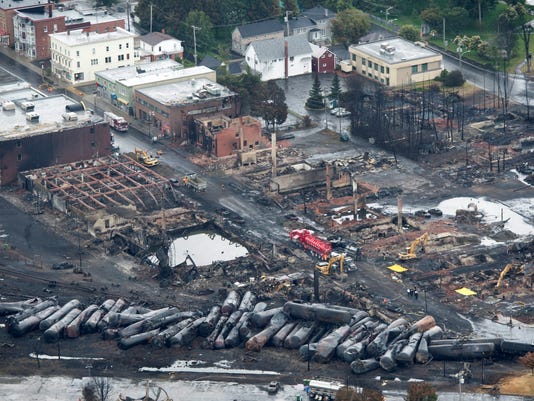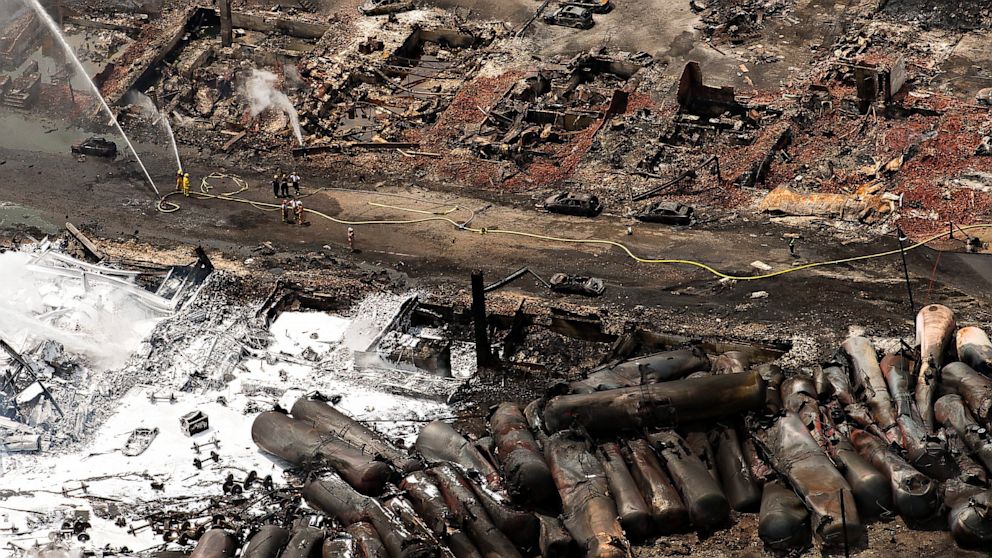Hi John, Bluewater,Averich and everybody.
Many thanks to those that have replied in response to my earlier posting on procedure and safety in the Canadian/American rail systems. what you basically seem to be advising is that the power units are left running basically 24/7 so as to avoid start-up procedures and safety checks. The foregoing is understandable and is a problem we have had to deal with in the British road transport industry in recent years.
With the development of heavy goods road transport in the UK from the 1960s until 2005 it became predominant in the 1990s for vehicles to become double shifted and then treble shifted meaning that the vehicles are not stood down at any time as three drivers will carry out an eight-hour shift on the same vehicle. It soon became apparent with the development of these changes that dangerous defects and accidents where being caused because vehicles were not receiving safety and mechanical checks in the way that they would when there is perhaps a four or five hour stand down downtime.
Safety personnel involved in the industry in cooperation with the vehicle Inspectorate then introduced what is now a statutory system of changeover checks where every driver prior to the commencement of driving a vehicle has a tick box type form to complete which has listed all the checks that have to be made prior to leaving the start point and on completion of his duties with that vehicle. The list is very comprehensive and initially it bought many complaints regarding the time it took for each employee to complete the listing.
However, pressure from the large road haulage companies on the manufacturers of the vehicles has now cut that time dramatically by computer automating much of the procedure. By pressing a button in the cab, brake air pressures are now measured over a three-minute period with the engine shutdown and any loss of pressure however slight is registered by a notification on the vehicle computer. Likewise the hydraulic system, electrical system and trailer couplings all checked in the same manner. The foregoing only leaves the driver to check the tyres for cuts and tread depth which all can be completed within a few minutes and the form can be handed into the office prior to leaving and a copy retained by the driver which can be handed to the vehicle Inspectorate if he/she is stopped on the road. A copy of the check is also retained on the vehicle computer for up to 3 months.
I outline all the above as it does show what can be achieved when there is a desire in an industry by both management and employees to solve problems and safety issues. Perhaps following this rail tragedy the same can be done across the Canadian/American rail networks. As John Citroen has advised in a different thread it is complacency which causes accidents in life. Perhaps it was complacency regarding cold start procedures and ways of avoiding them and modernising them that has led to this accident and great loss of life.
Sadly it very often takes an accident for us to learn of the real dangers in any situation. However, it is learning from that accident that always prevents similar accident occurring. Perhaps the investigations into this one will ring the changes in rail procedures across the pond and especially regarding cold start procedure or the avoidance of them
Bill
posted from the 20:25 London Paddington to Taunton HST service. At the rate we are travelling on this delayed train I certainly hope someone's done the safety checks before we left London. (LOL)
Many thanks to those that have replied in response to my earlier posting on procedure and safety in the Canadian/American rail systems. what you basically seem to be advising is that the power units are left running basically 24/7 so as to avoid start-up procedures and safety checks. The foregoing is understandable and is a problem we have had to deal with in the British road transport industry in recent years.
With the development of heavy goods road transport in the UK from the 1960s until 2005 it became predominant in the 1990s for vehicles to become double shifted and then treble shifted meaning that the vehicles are not stood down at any time as three drivers will carry out an eight-hour shift on the same vehicle. It soon became apparent with the development of these changes that dangerous defects and accidents where being caused because vehicles were not receiving safety and mechanical checks in the way that they would when there is perhaps a four or five hour stand down downtime.
Safety personnel involved in the industry in cooperation with the vehicle Inspectorate then introduced what is now a statutory system of changeover checks where every driver prior to the commencement of driving a vehicle has a tick box type form to complete which has listed all the checks that have to be made prior to leaving the start point and on completion of his duties with that vehicle. The list is very comprehensive and initially it bought many complaints regarding the time it took for each employee to complete the listing.
However, pressure from the large road haulage companies on the manufacturers of the vehicles has now cut that time dramatically by computer automating much of the procedure. By pressing a button in the cab, brake air pressures are now measured over a three-minute period with the engine shutdown and any loss of pressure however slight is registered by a notification on the vehicle computer. Likewise the hydraulic system, electrical system and trailer couplings all checked in the same manner. The foregoing only leaves the driver to check the tyres for cuts and tread depth which all can be completed within a few minutes and the form can be handed into the office prior to leaving and a copy retained by the driver which can be handed to the vehicle Inspectorate if he/she is stopped on the road. A copy of the check is also retained on the vehicle computer for up to 3 months.
I outline all the above as it does show what can be achieved when there is a desire in an industry by both management and employees to solve problems and safety issues. Perhaps following this rail tragedy the same can be done across the Canadian/American rail networks. As John Citroen has advised in a different thread it is complacency which causes accidents in life. Perhaps it was complacency regarding cold start procedures and ways of avoiding them and modernising them that has led to this accident and great loss of life.
Sadly it very often takes an accident for us to learn of the real dangers in any situation. However, it is learning from that accident that always prevents similar accident occurring. Perhaps the investigations into this one will ring the changes in rail procedures across the pond and especially regarding cold start procedure or the avoidance of them
Bill
posted from the 20:25 London Paddington to Taunton HST service. At the rate we are travelling on this delayed train I certainly hope someone's done the safety checks before we left London. (LOL)
Last edited:





